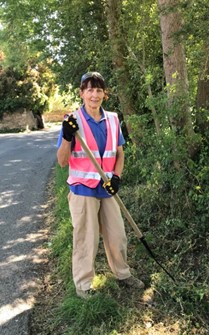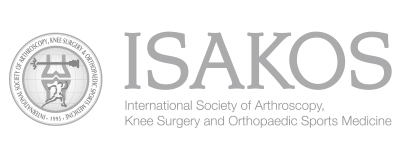MINIMALLY INVASIVE TOTAL HIP REPLACEMENT
Mr Aslam now offers a minimally invasive, tissue sparing, total hip replacement using a new technique. By not cutting any muscles around the hip and working through a small ‘window’ in the tissues, the hip can be replaced with minimal soft tissue damage. This can provide faster recovery, shorter hospital stay and rapid return to full function.
With the new minimally invasive Hip Replacement surgery there is no surgical dislocation of the hip. By not surgically dislocating the hip, there is less trauma to the surrounding muscles and tendons and no muscles are cut during surgery. With this technique, the implant is built inside the body, so the hip is not twisted into unnatural positions. This leaves more tissue intact, specifically the short external rotator tendons and gluteus medius muscle. These muscles are normally responsible for preventing dislocation.

In a muscle sparing enhanced recovery hip replacement procedure (left image), key muscles are parted, and not resected (cut) always. This enables the patient to mobilise swiftly after surgery, possibly returning to normal daily living activities, without restrictions, more quickly than in a traditional total hip replacement, where the muscles are resected (right image).
Mr Aslam said “A new minimally invasive, tissue sparing total hip replacement. By not cutting any muscles around the hip and working through a small ‘window’ in the tissues, the hip can be replaced with minimal soft tissue damage. This leads to faster recovery, shorter hospital stay and long-term return to full function”.
ADVANTAGES
• Less pain than traditional hip replacement surgery
• Shorter incision than traditional hip replacement surgery
• Less blood loss
• Less muscle and tissue trauma
• Faster Recovery
• Shorter hospital stay
• Reduced hip dislocation risk
– okay to cross legs
– okay to lie on either side
• No wedge between legs necessary
• More rapid recovery to full function
• More rapid return to driving
• Can often walk the day of surgery
• Reduced requirement for crutches
CASE STUDY: PIONEERING ‘SHIP-IN-A-BOTTLE’ HIP-OP MAKES RECOVERY PLAIN SAILING FOR RACHEL

A pioneering hip replacement operation that avoids damaging many of the nerves and muscles that would be affected by conventional surgery, has been praised by Chipping Camden publisher Rachel-Claire Cunynghame.
Rachel was actually out in the garden doing some ‘light weeding’ just days after the operation at Spire South Bank Hospital in Worcester. The operation, carried out by Consultant Orthopaedic Surgeon Mr Nadim Aslam, avoids the dislocation of the hip, allowing the replacement parts to be fitted through a tiny incision – at 8cms much smaller than normal.
“The scar is absolutely nothing at all when you consider what kind of operation I went through,” explained Rachel.
“But most amazing was how quickly I was back on my feet as well as sleeping normally.”
Mr Aslam, who after qualifying as a surgeon went on to further train in joint replacements in Toronto and Chicago, explained: “By never surgically dislocating the hip there is little trauma to the surrounding muscles and tendons.”
“With this surgical technique, the implant is built inside the body, so the hip is never twisted into unnatural positions during surgery. In a way it’s a bit like building a ship inside a bottle – we go through a small space to operate in a larger space without ‘breaking the bottle.’
“By not cutting any muscles around the hip and working through a small ‘window’ in the tissues, the hip can be replaced with minimal soft tissue damage which leads to faster recovery, shorter hospital stay and long-term return to full function.
“In effect, instead of cutting through key muscles and nerves, we simply move them out of the way, putting them back into place when the procedure is completed.”
The muscle-sparing, minimally-invasive technique is now being performed by a steadily growing number of surgeons throughout Europe.
“Patients have made an enhanced recovery with this muscle-preserving approach and are more confident with their hips at an earlier stage. I believe this is due to the fact that by reducing muscle and capsule damage, they keep more of their joint positional sense.”
“It also means they need fewer painkillers after the operation and are usually able to return to work and to driving much earlier than patients receiving conventional hip operations,” said Mr Aslam.
As for Rachel, she said: “I was home in two days and actually working in my new garden three days after the op. I used a crutch for a few days but after that I was walking pretty well. Eight-weeks on and I was totally unaware that I had even had a hip replaced!”
“It was quite amusing when the family came over for Easter – I was up and about and organising everything – no-one could believe I’d had a new hip fitted just 11 days earlier.”
Discussion with Nadim is important to answer any questions that you may have. For information about any additional conditions not featured within the site, please contact us for more information.









